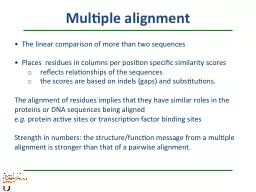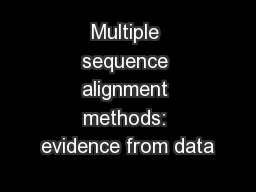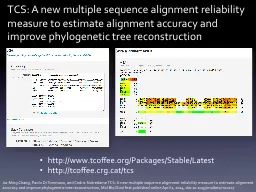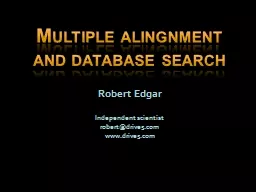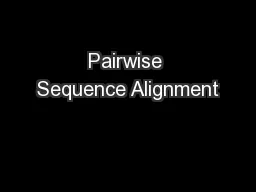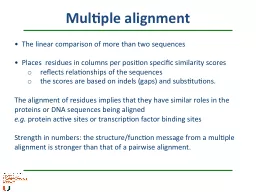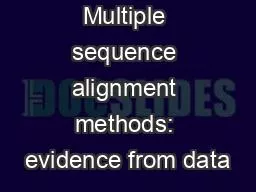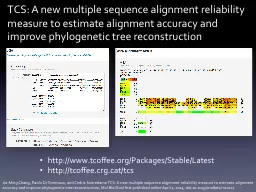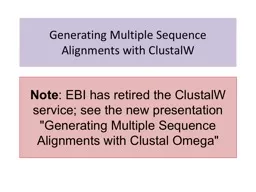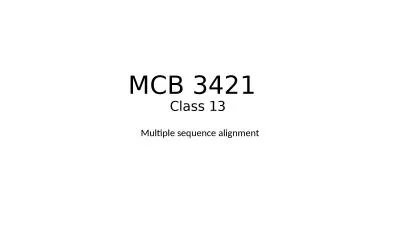PPT-Multiple alignment
Author : yoshiko-marsland | Published Date : 2017-05-31
The linear comparison of more than two sequences Places residues in columns per position specific similarity scores reflects relationships of the sequences
Presentation Embed Code
Download Presentation
Download Presentation The PPT/PDF document "Multiple alignment" is the property of its rightful owner. Permission is granted to download and print the materials on this website for personal, non-commercial use only, and to display it on your personal computer provided you do not modify the materials and that you retain all copyright notices contained in the materials. By downloading content from our website, you accept the terms of this agreement.
Multiple alignment: Transcript
Download Rules Of Document
"Multiple alignment"The content belongs to its owner. You may download and print it for personal use, without modification, and keep all copyright notices. By downloading, you agree to these terms.
Related Documents

